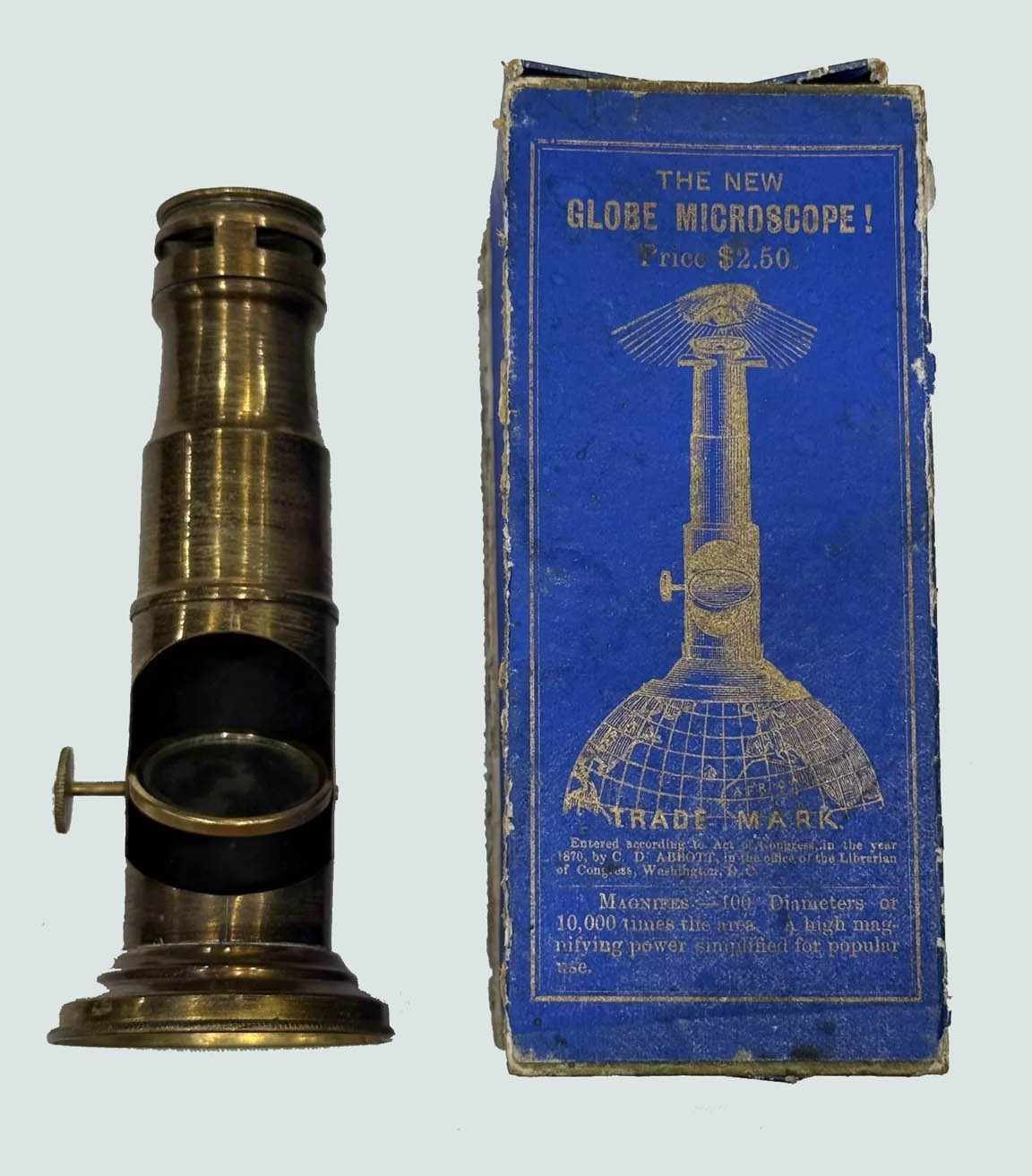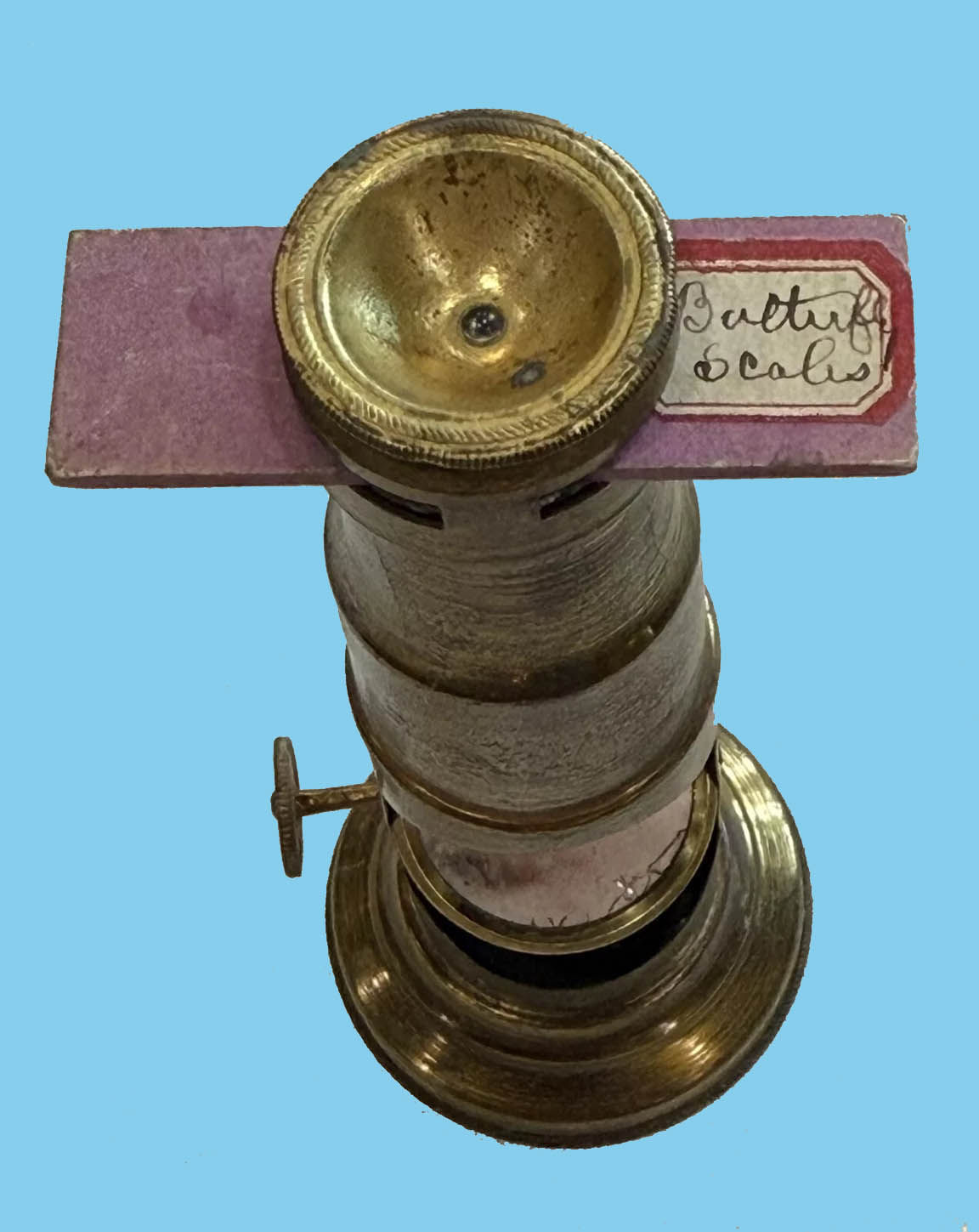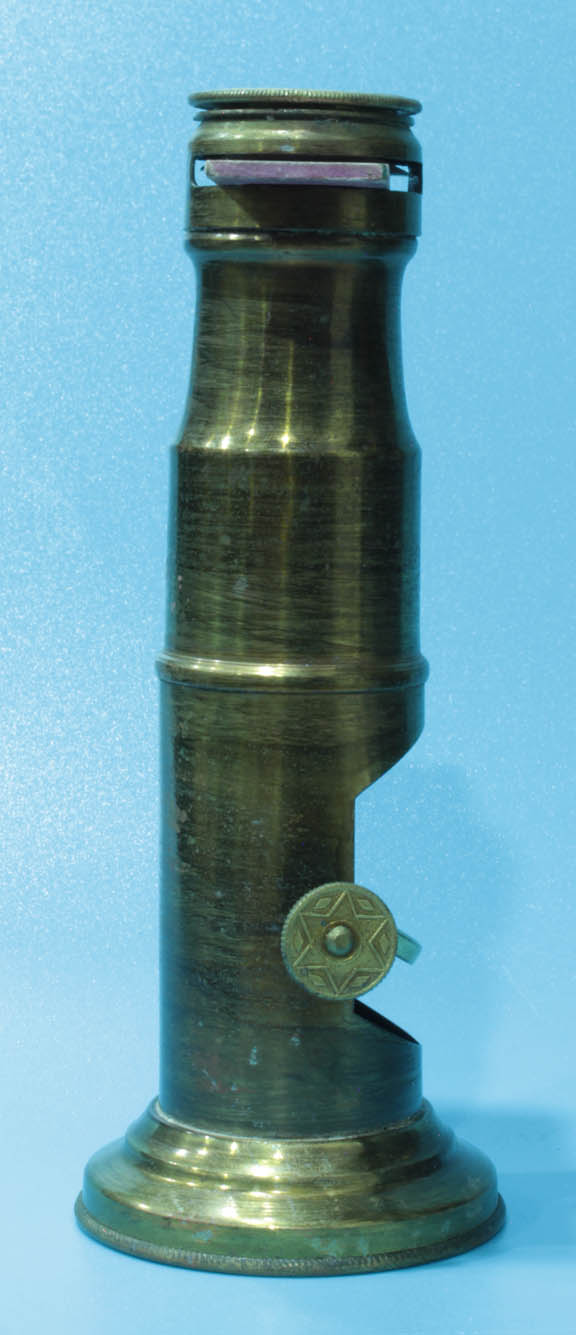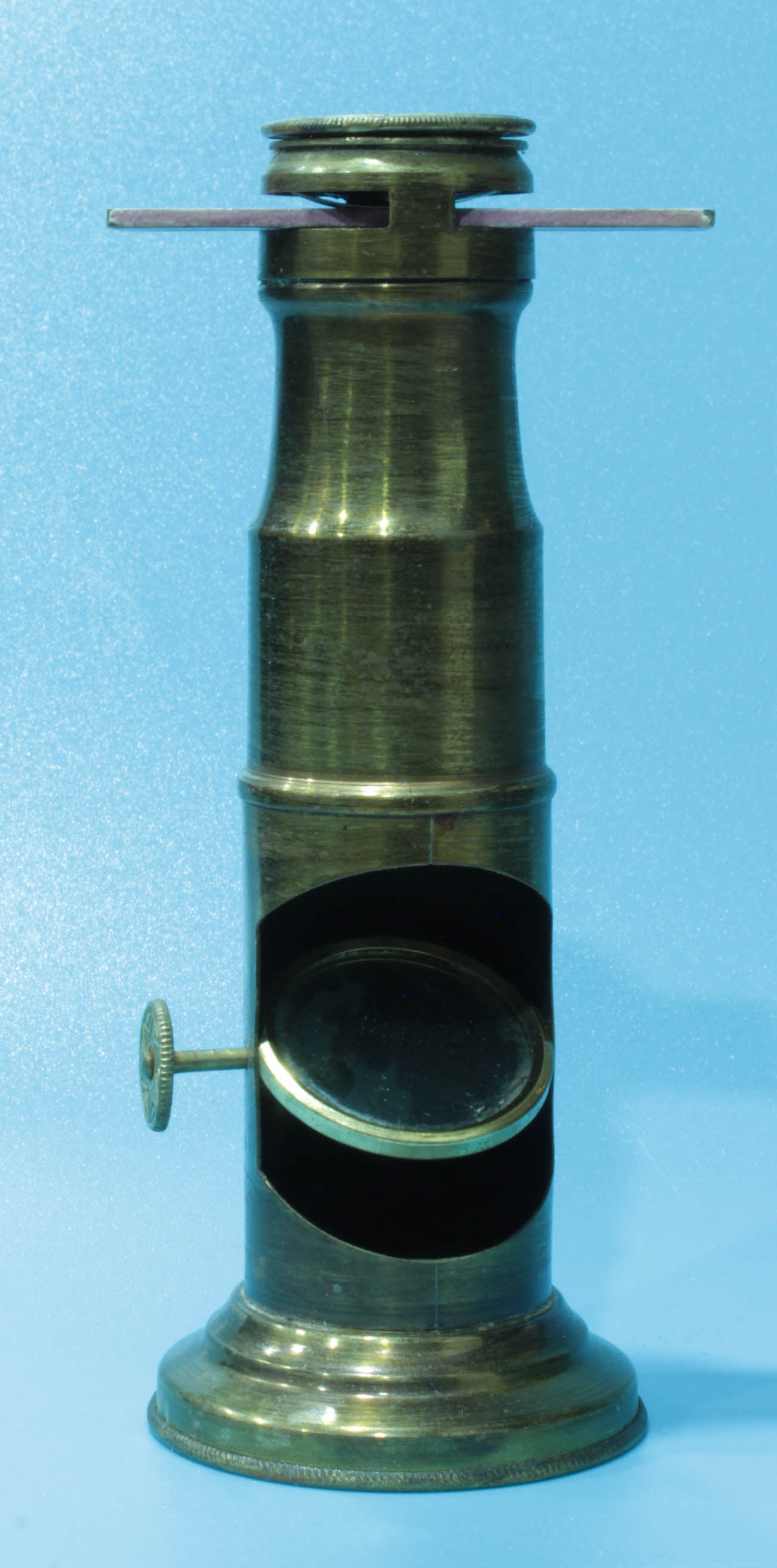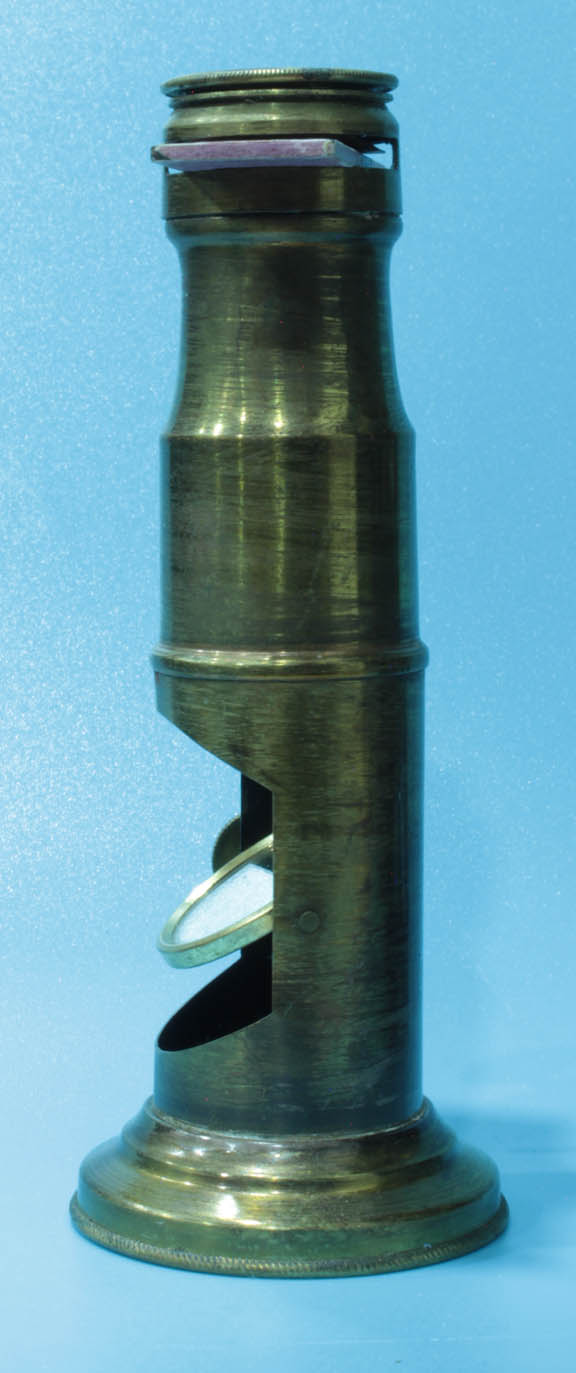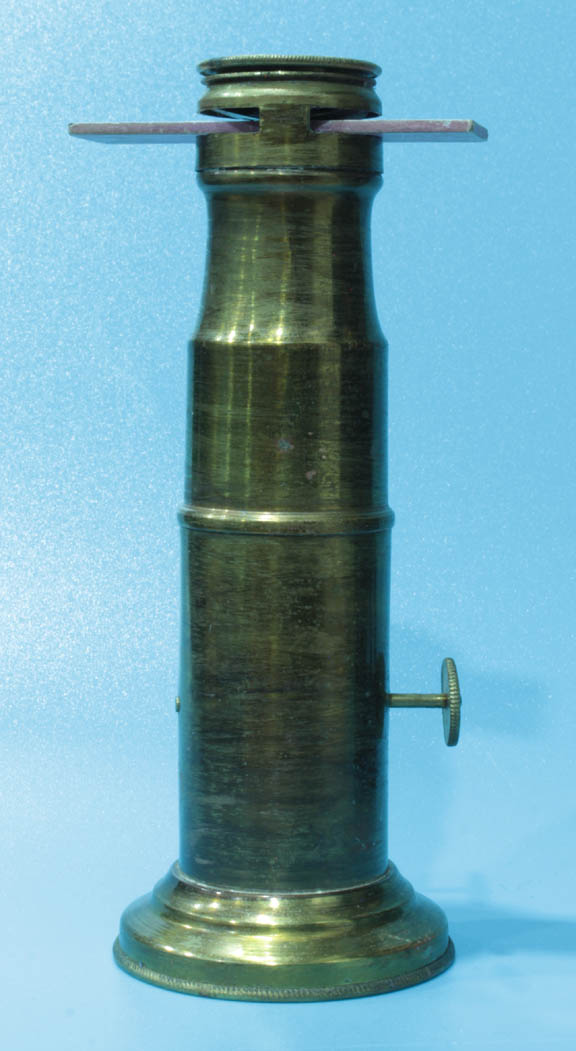DESCRIPTION:
This is a single-lens (simple) microscope patterned afterthe Craig Microscope of about a decade before. It consists of a brass tube with a cutout for the tilting mirror in its base controlled by a knob on one side. There is a slot near the top for the specimen slide. The slide is held in place by a sprung fitting. The spherical single lens is housed in a mount which can be screwed up or down to achieve focus. The top of the slide-on cover of the original rectangular blue case is labelled:
THE NEW, GLOBE MICROSCOPE
Price $2.50
with an illustration of the microscope sitting on tobe of a globe labelled:
TRADE MARK, Entered according to an act of Congress in the year 1870, by C.D. ABBOTT, to the office of the Librarian of Congress, Washington, D.C.
MAGNIFIES 100 Diameters or 10,000 times the area,. A high magnifying power simplified for popular use.
.
The back of the slide on top has instructions, and the remaining side crude illustrations of a fly's foot and bee's tongue.
This microscope was apparently invented
and manufactured by George Meade, despite the trademark of C.D. Abbott. The other two extant sides of the case cover contain instructions for use on one, and illustrations of a fly's foot and a bee's tongue on the other.
There is a single slide with the microscope which contains various scales of the wings of a butterfly. The striations of these scales are easily resolved by this microscope.

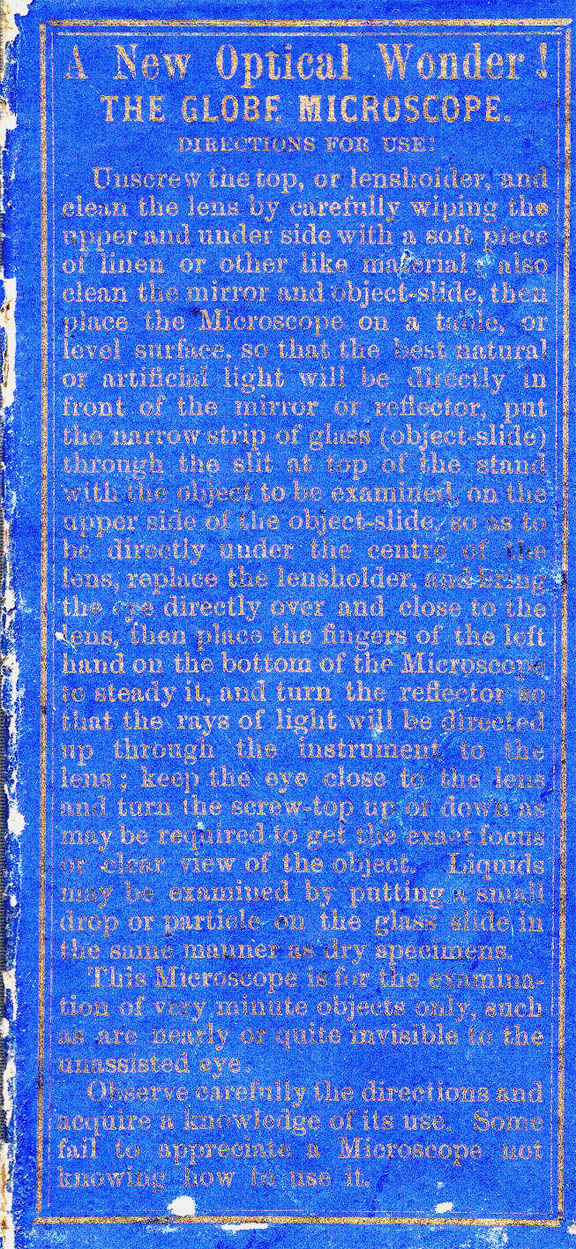
CONDITION:
The condition of this microscope is really quite good and it is complete. The microscope mirror has a tiny crack on its periphery. It yields a reasonably good image though there are some dust-like distortions visible that do not resolve with cleaning the lens.
The box is missing one of the four sides of the slide-on cover. There are some cracks in the cardboard of the bottom portion. There is some loss of the gold lettering on the box.
HISTORY OF THIS MICROSCOPE
This form of microscope was introduced by Henry Craig, who called it the Craig Microscope. He was granted a patent on Feb 18, 1862, mainly for the unusual type of lens he used. He manufactured these lenses with a fused bead of flint glass melted onto a thin plate of crown glass, which was the chief novelty of the microscope, the combination of flint and crown glass theoretically achieving an achromatic lens. This produces a lens that must touch, or come close to touching, the object to be studied. Although various agents sold the Globe for Craig while he was alive, after he died in 1864, it continued to be sold by others. Among these was George Meade, who sold the Craig microscope from 1868, changing the design in 1870. It was then marketed as the Globe Microscope. Its most important changes were the nature of the lens which was now a simple spherical lens and, in addition, the lens housing allowed variable focusing, not available with the design of the Craig lens. The Globe Microscope was heavily advertised in 1872 and continued to be advertised through 1878. It was therefore made for at least 6 years. Why C.D. Abbott held the registered Trademark is unclear since he did not produce the microscope himself.
